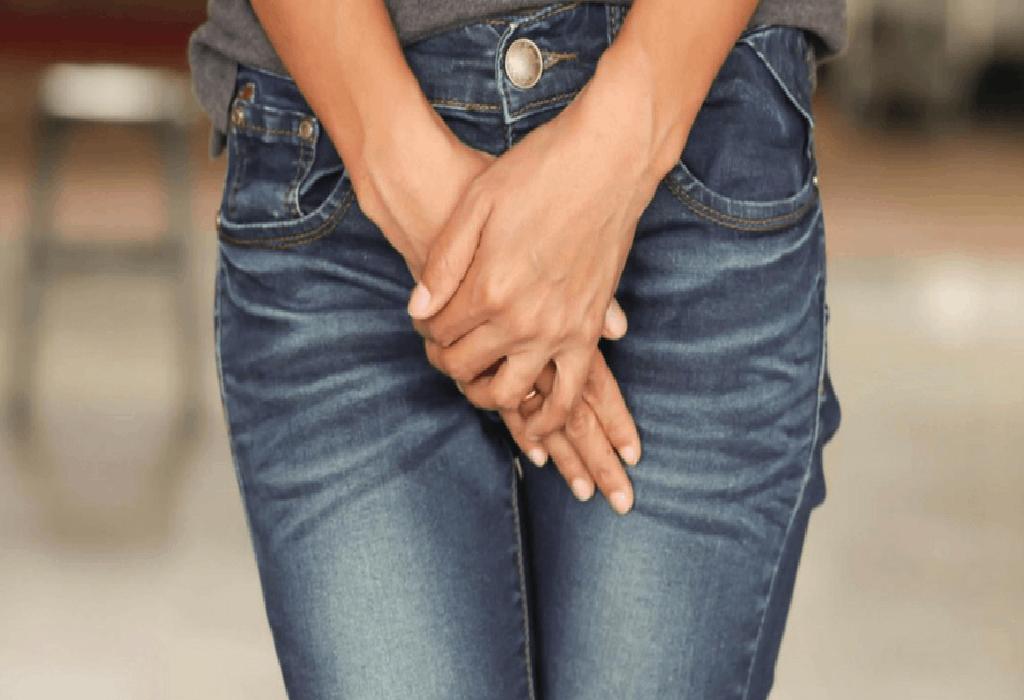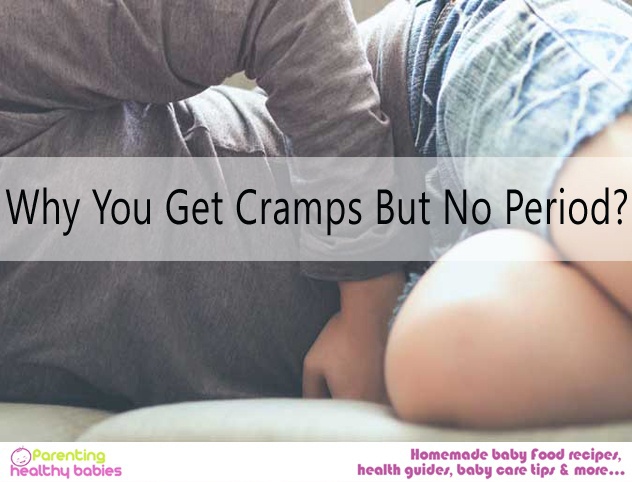If you’re a woman, you might have noticed that your vagina and it needs change over a time period. If stomach cramps and oscillating mood swings weren’t enough during periods, having to deal with rashes can be plain terrible. Period rashes (aka contact dermatitis) are agonizing, the trick to avoid the pain and discomfort is to practice proper hygiene.
In This Article:
- How can Pads Cause Rashes During Periods?
- 11 Ways to Avoid Sanitary Napkin Rashes
- Top 8 Pad Rash Treatments and Home Remedies
How can Pads Cause Rashes During Periods?
If you get vaginal rashes or itching during menstruation, two of the major causes are heat and dampness. Being in contact with sanitary pads can result in the vagina being kept damp. You are bound to get rashes under such conditions as the skin is irritated by the remaining menstrual flow and any sweat on sanitary pads that have not been absorbed. It is similar to diaper rashes but women with sensitive skin suffer from such rashes.
Chafing is another cause. When the skin is dry, for example, the area can be chafed by sanitary pads rubbing it while moving or walking.
One more cause of rashes is the presence of an irritant, like fragrances, in sanitary napkins. Some women’s skin may be sensitive to the chemicals used to provide fragrance.
While the number of women suffering from rashes in the vulva area seems to be falling as the quality of sanitary products has improved. Even so, many women with sensitive skin are still troubled by them.
Read More:When Will My Daughter Get Her First Period?
11 Ways to Avoid Sanitary Napkin Rashes
Do not Douche or Wash Out Your Vagina with Soap
You should clean your vagina with warm water, but don’t use any sprays, soaps or other chemical-based products to wash your vagina as it can irritate the sensitive skin around your vulva and worsen the rashes.
Change Pads Frequently
Don’t make the mistake of changing your pad only twice a day. Instead, carry spare sanitary napkins with you and change after three to four hours to stay on the safer side and avoid rashes and infections.
Read More:Irregular, Painful or Heavy periods: 6 Health Issues You Need to Worry About
Stay Hydrated
Drinking water is one way to help ease the aching and reduce the chances of toxin build up as well as improving the health of your vagina.
Avoid Scented Pads
The main cause of period rashes is the presence of irritants around the sensitive skin of the vagina. Opt instead for hypoallergenic products free of irritants.
Wear Comfy Clothes
Skinny jeans might make you feel sexy but it retains heat and worsens the friction between your thighs, the pad and your sensitive vaginal skin. Opt for loose and flowy clothes that allow for air circulation, keeps the area cool so you don’t sweat and prevent dampness and heat build-up around your groin.
Read More:Delaying A Period: 5 Side-Effects of Delaying A Period
Keep Yourself Dry
It’s important to keep your vulva clean during your period, especially if you can develop a pad-related rash. Rinse the area with plain warm water. Avoid using soap, feminine wipes or deodorants and douching. A washcloth isn’t necessary but if you prefer to use one, use a cloth made of soft fabric that’s been laundered with fragrance-free detergent and without fabric conditioner or bleach would work best.
Maintain Proper Hygiene
While changing the pad, you should take care of cleaning yourself too. Always use water to clean your vagina to maintain the pH of the skin. Wash your vagina every time you urinate.
Use a Cold Compress
Place an ice pack on the vagina, it will soon soothe the itching and alleviate the pain. Applying a cool compress to your vulva can help ease rash-related pain, burning and/or itchiness. If you don’t have an ice pack, you can wrap some ice cubes in a clean cloth and place it on your vagina. This will work just as well.
Read More:11 Best Apps to Track Your Period Menstrual Cycle
Use a Warm Compress
A warm compress can soothe those ugly and itchy period rashes. Apply a warm compress on your vagina. Take a clean cloth, soak it in warm water, squeeze out the excess water, and then place it on your vagina or sitting in a few inches of lukewarm bathwater (without anything added) can also help ease your discomfort. Warm compresses not only reduce the rashes but provide relief from the pain too.
Be Aware of What Pads Work for You
You should be aware of the sanitary napkins you are using. There are some brands that make their pads with plastic. Try to avoid these brands. The contact of the skin around your vagina and the plastic surface can cause friction and make you feel irritated. Always choose those brands which have the cottony soft surface which is mild to the skin and keeps your vagina healthy.
Read More:Black Period Blood: Do I Need to Visit the Doctor?
Change Period Products
Once you’ve determined that your rash is likely caused by the sanitary pads you’re using, changing or rotating the period products you use is the next step. Some trial-and-error might be needed to find the best product or combination of products for you. Choosing unscented pads is generally a recommended first step. Many women opt for unbleached, organic cotton pads that contain no chemical additives. Reusable cloth pads, menstrual cups, and unscented or organic tampons are other options. Many women find using a combination of products (depending on your activities and daily flow) works best.
Top 8 Pad Rash Treatments and Home Remedies
Apply Talcum Powder
Baby Powder can save you from rashes and keep the area dry and clean. It will decrease friction caused by the pad, absorb sweat in the area and lower the chances of rashes and boils on your groin and thighs. Just like it helps stop diaper rashes in babies, it can help prevent period rashes.
Apple Cider Vinegar
The main component of apple cider vinegar is acetic acid which contains anti-inflammatory, antibacterial and antimicrobial properties. All of these have the potent ability to treat a pad rash and can help ease the itchiness and redness of the skin. You can apply this by dabbing a cotton ball, soaked in diluted apple cider vinegar in a cup of water, around your vagina.
Aloe Vera
Aloe vera can help soothe your pad rash and prevent the skin from itching due to its antibacterial, antifungal and anti-inflammatory properties. All these help in treating skin rashes, itchy dry skin, allergic reactions and contact dermatitis. You can apply this by rubbing aloe vera gel along the infected areas. Leave it for 30 minutes and then wash it off.
Manuka Honey
What sets manuka honey apart from regular honey are its antibacterial properties. Manuka honey has anti-inflammatory, antiviral and antioxidant properties that reduce redness and swelling and also restores the pH balance of the skin. Mix a tablespoon of manuka honey with two teaspoons of olive oil, and apply this mixture on the affected skin and leave it on for 30 minutes before washing it off.
Vaseline or Any Other Substitute
Vaseline has the ability to reduce dry, itchy and inflamed skin. As chafing is one of the causes of pad rash, applying vaseline in the inner thighs can help prevent chafing which when not treated can form blisters. Also, applying Vaseline whenever you change your pad will keep the area hydrated by acting as a protective barrier to help protect the skin.
Olive Oil
Extra virgin olive oil is loaded with powerful antioxidants, and it is anti-inflammatory and antibacterial in nature. All of these help in healing the affected skin, thereby aiding in soothing the skin and reducing redness and inflammation. Take a few drops of extra virgin olive oil and mix it with a few drops of honey. Apply this on your skin rash a few times daily till the redness reduces.
Coconut Oil
Pure virgin coconut oil contains antibacterial, antioxidant, analgesic and antimicrobial properties. In addition, coconut oil will keep the affected skin area hydrated and prevent dryness of the skin. Take a little coconut oil in your palms and rub it together. Slowly apply it on the affected skin. Leave it for 30 minutes and wash it off or you may keep it overnight.
Neem Leaves
Neem leaves contain beneficial compounds that have antioxidant, anti-inflammatory, antifungal and antibacterial properties. The usage of neem leaves or its oil will provide relief from pad rash and reduce the redness and inflammation. Take a few drops of neem oil and with the help of a cotton, apply it directly on the skin rash. Leave it for 30 minutes and wash it off.
Sources/
https://www.healthline.com/health/rashes-from-pads
https://www.india.com/lifestyle/how-to-get-rid-of-pad-rash-tips-to-get-relief-from-sanitary-pad-rashes-during-periods-1715861/













